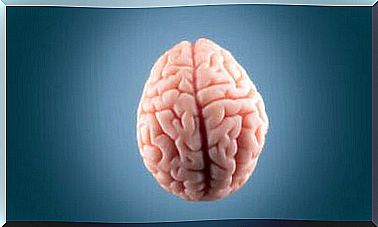Your Brain “cleanses Out ” Useless And Unnecessary Information
You have to “unlearn” to be able to learn. Clear out useless and unnecessary information to make room for the useful and meaningful. Our brain is recycled during the night, although it may seem strange. It meditates and purifies itself. It pulls up “weeds” so that it can create stronger connections, new thoughts and much more useful lessons.
Sir Arthur Conan Doyle wrote in “A Study in Red” about how surprised John Watson was when he discovered that his roommate had another talent. Sherlock Holmes did not know that the earth revolved around the sun. But the famous detective had a great reason why he chose to forget this fact and other things.
The human brain – Holmes explained – is like a small empty palace where you can place all the furniture you want. Stupid people accumulate shiny and fine objects that they find here and there. They do not sort out those that are really necessary.
A little at a time, we get less and less space for useful knowledge. But a skilled person is very careful about what he places in the palace of the brain. He only puts in the tools he needs to get his job done.
Almost without knowing it, Conan Doyle has taught us a basic principle of economics with the inner “gardening”. This is where the brain decides which synaptic connections it should close and which ones it should destroy. And it does this based on our lifestyle, our interests, experiences and learning.
Neurologists often say that we have a metaphorical “delete” button for things we do not need, which saves space and removes unnecessary information. We can then build new, stronger connections that we can use to absorb more useful knowledge. It is a process that we can actually control. Let’s look at how.
Many of us still have the classic notion that the more synaptic connections the brain has, the better. We believe that this is how we learn new things and acquire new skills, abilities and knowledge. Sherlock Holmes’ theory, however, has a certain scientific basis. The brain is not a place for unconnected things that we randomly and obsessively accumulate.
The brain is a sophisticated organ that likes to be economical and specialize depending on its owner. Let’s look at an example. You have decided to learn to play the piano. You are very happy to attend the course once a week. In this case, this impact on the brain will be minimal, but if you take things seriously and practice daily, amazing things will happen.
One of them is a so-called “synaptic pruning”. In other words, in order to create new synapses and new circuits with that musical learning, the brain will first remove old neural connections that are not necessary. Unnecessary information. It takes up space and new routes are needed, new bridges so that new things can flow.
To understand this concept, imagine that your brain is a garden. Instead of flowers, synaptic connections grow here. They create routes between nerve cells where neurotransmitters such as dopamine and serotonin travel.
In order for these structures to flourish, we must first pull up the weeds. We have to thin and clean out the old to create space. The microglial cells perform this task – magical things that allow us to learn new things. It’s absolutely amazing!
We already know that our ability to learn things often has to do with our own biology. In order for new knowledge to be integrated into memory, we need sleep. Neurologists often say that a brain that does not get sleep is like a wild forest that is so dense that you can not move. It is a chaotic, dark, suffocating and overgrown place.
To clear the roads and get more space, we need a deep sleep that makes us rest. This is when the glymphatic system begins. This system has the task of removing waste substances and all the dead cells created by the synaptic pruning.
We are talking about a deep sleep, but it should be noted that a short 15 minute nap during lunchtime or 20 minutes of meditation is also useful when it comes to creating space for new nerve connections.
Neuropsychologists also say that another thing that happens is that we sometimes “deactivate” that synapse if we no longer focus on it. It’s like pressing the “delete” button to delete useless and unnecessary information.
It is a fascinating phenomenon that should be further investigated.








